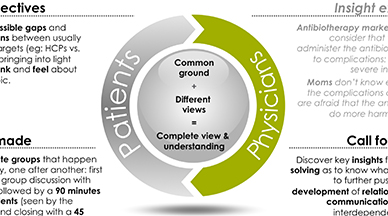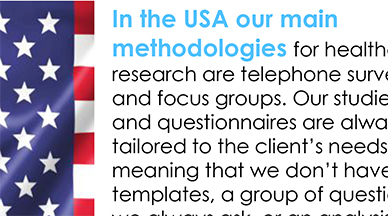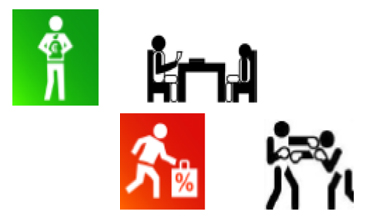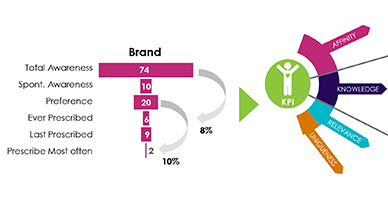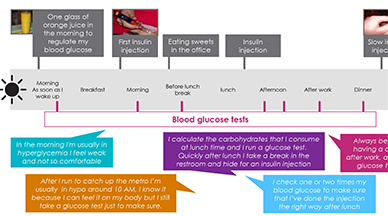ISSUED PUBLICATIONS
Read or download all articles





IRIS Dreams & Aspirations 2024 Study
A study that analyzes the dreams and aspirations from the inhabitants of 17 countries in the Americas, Europe, Africa, Asia and Oceania. Take a look!

IRIS PUBLIC CONFIDENCE STUDY 2023: REPORT ON HEALTH CARE
This study provides a multi-country view of public sentiment across the most important issues: Public assessments of the economy and personal finances; Levels of confidence and concern about climate change; Perspectives on the state of healthcare systems. This second report presents results on health care confidence across 27 countries.

IRIS Public Confidence Study 2023: Report on Climate
This study provides a multi-country view of public sentiment across the most important issues: Public assessments of the economy and personal finances; Levels of confidence and concern about climate change; Perspectives on the state of healthcare systems. This second report presents results on climate confidence across 26 countries.

IRIS Public Confidence Study 2023: Report on Economic Confidence
This study provides a multi-country view of public sentiment across the most important issues: Public assessments of the economy and personal finances; Levels of confidence and concern about climate change; Perspectives on the state of healthcare systems. This first report presents results on economic confidence and personal finances across 26 countries.

Consumer Purchase Behavior & Coping Strategies Study (in the context of rising prices)
9 out of 10 people in Romania are affected by the increasing prices, and brand loyalty seems threatened, as 45% of consumers have already tried cheaper brands. Is this all around the globe? Check this presentation by our Romanian Member!

IRIS Global Eating, Drinking & Sustainability Survey 2021
This study details the findings of a multi-country market research study, aimed to understand current eating and drinking trends around the world. The project aimed to understand the impact of COVID-19 on eating & drinking habits, and if and how sustainability plays a role in deciding what to purchase

Mobility Monitoring COVID-19 in Switzerland
The COVID-19 pandemic had a major impact on mobility and it was important to have up- to-date data on an ongoing basis. What happened in Switzerland? This study shows the swiss mobility during the pandemic.

Air Pollution Increases the Incidence of Upper Respiratory Tract Symptoms among Polish Children
A substantial proportion of airway disease’s global burden is attributable to exposure to air pollution. This study aimed to investigate the association between air pollution, assessed as concentrations of particulate matter PM2.5 and PM10 on the upper respiratory tract symptoms (URTS) in children in Poland.

Panelbook - Our Online Access Panel for Your Studies
> 100,000 registered private persons from every social class in Switzerland
> 35,000 decision-makers and teams in companies of all sizes
> Covers all of German-speaking and Western Switzerland as well as Ticino
> The best data quality through high expertise in the field of online research and careful panel cultivation
> Certified according to international standard ISO 26362

Winning Back Customers with GRIPS
Human decision-making is irrational but predictable. Thanks to the GRIPS typology, companies are able to identify relevant ‘purchaser types’, understand their decision-making behaviour, and actively implement these insights – for more conversions and more effective processes.

Brand loyalty is a shortcut to quick purchase decisions
In March 2018, ISRA Center Marketing Research finalized the study "Brand (New) Loyalty in Romania, in 2018. How human is your brand". The purpose of the study was to identify how brands succeed in earning and preserving consumer loyalty, in digital age

A Positive Typology of Irrational Decision Strategies
Behavioral economics has been hugely successful in debunking the notion of a homo economicus, but as yet it has failed to deliver a ‘positive model’ of human choice as an alternative to rational choice theory. Based on thousands of experiments, we know how people don’t decide (i.e. rationally), but we don’t yet have a consistent model that shows how they do decide.

Test Studio – Get to know your target group
intervista has modern, centrally located test rooms in Bern, offering an optimal environment for focus groups, usability tests, in-depth interviews/exploration, workshops and product tests

Qualitative research through groups is needed for political communication
This brief essay seeks to contribute elements for reflecting and comprehending the potential of qualitative research through groups discussions for political communication and the democracy.

Hot Spot - A new online tool
What impact is your advertising having?
Test your advertising media with “Hot Spot”

Behavioral Pricing
We will show you how to unlock completely new margin potentials and significantly increase your profits in the process. Find out why it pays to finally say goodbye to the idea of the rational customer.

The Grocery Eye 2015
Identifying consumer perceptions towards food and drink
The Grocery Eye 2015 has examined the shopping habits of 2,000 supermarket shoppers to identify perceptions towards purchasing food and drink, as well as non-food products. Our study has assessed topics such as category innovation perceptions, attitudes towards product attributes and ingredients, drivers and barriers to purchase.

The Shopper Barometer – Trends in attitudes and spending habits for 2015
The Shopper Barometer 2015 examines current shopper trends, providing a snapshot of attitudes and spending habits to understand how behaviours are changing, as well as identifying future consumer trends.
Our longitudinal study is now in its third year and this year’s Barometer focuses on eating out of home, the role of Omnichannel, and the future of shopping.

Content Optimiser – How to measure channel content value
Measuring content value is important to drive continued viewer engagement – the greater the engagement the more viewers will continue to come back to the channel for more.
Whilst the abundance of data available from BARB gives viewing numbers and an idea of who is viewing, it doesn’t answer why they view, the level of viewer engagement and what the content brings to the channel. To understand the value of different content a different approach is required.

Brand Partnerships – How to prove their worth
Brand partnerships are everywhere, consumers are savvy to them and marketers extol their benefits.
We all know that a good brand partnership can increase your customer base, drive depth of engagement, improve customer perceptions and increase loyalty…for both brands in a partnership. But how do you prove that it has done this, and show the ROI?

Changing Lanes - Automotive Trends 2015
Understanding consumer attitudes is essential for the success of any business-to-consumer industry, and the automotive sector is no exception. Few industries devote as much energy, time and investment towards improving brand recognition, enhancing customer loyalty and matching consumers’ tastes as the automotive sector.
Future Thinking has produced Automotive Trends 2015, an inaugural study of the UK motoring industry, taking into account the sentiments and attitudes of 1,200 consumers that either own (56%) or are intending to purchase (44%) a car.

The role of customers in product development
In theory, the desires of the customer should play a part in product development. In practice, this is rarely the case. We show how companies can successfully involve the customer in development. The result: more attractive products at lower cost.

Driving Brand Success – Research solutions for 2015
The roles of technology and innovation continue to play a pivotal role in the way we develop new approaches and research solutions, to help better understand consumers and drive brand success.
We’ve identified 10 areas of research which we believe will be integral to brand success over 2015; from brand tracking to NPD, testing ideas to generating new ones and measuring satisfaction to understanding behaviours
The impact of digital media and the role it plays in children’s lives
In recent years increasing levels of sophistication in technology have transformed the media landscape, as we develop new ways to consume media.
We sat down with a range of kids experts, our very own Playground Monitors who provide an external authority on projects across all areas of our work, to understand the positive and negative effects digital media has had on kids’ lives.

Sports Sponsorship – A cost effective investment for your brand
Sports fans are bombarded with brand messages and campaigns across all forms of media; from team, stadia and TV sponsorship to mobile, social media and online collateral. As a result, measuring, evaluating and predicting advertising and sponsorship campaign effectiveness to optimise your sponsorship portfolio has become increasingly complex.
With so many investment opportunities to choose from, how do brands ensure their sponsorship portfolio enables them to reach the highest number of people within their target markets for the most cost effective investment?
Earlier this year, Future Thinking conducted an online study to find out where and how sports sponsorship deals are achieving cut through with fans.

How to get your child reading for pleasure
Recent surveys show a decline in reading as an activity and children are seemingly less engaged than ever before. For families this presents a real challenge – how do you bring up a child who loves to read for pleasure? There is no simple solution to this challenge; ultimately, if we want to raise a child who loves to read, we need to get involved.
We’ve teamed up with Alison David, Consumer Insight Director at children’s book and magazine publisher, Egmont; home to some of the world’s best-loved characters to provide some top tips on how to get your child reading for pleasure.
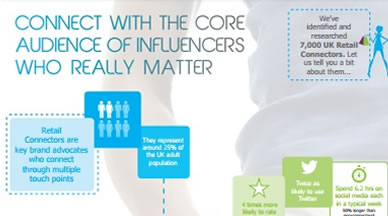
Identifying the connected consumer for the retail industry
How do you understand your brand’s performance in terms of consumer awareness, association and equity? Brand tracking plays an essential part in measuring the strength and engagement with your brand and is fundamental to the creation of a strategy to influence consumers and track performance over time.
Understanding the core audience of retail influencers who are engaged with your brand is a vital part of this process. We’ve identified a group of consumers who are vital to disseminating brand messaging and are highly engaged; connecting through multiple touchpoints, making them key brand advocates.

Pricing studies - then what?
Many companies fail to earn the full value of their profits because their pricing strategy is not based on the actual value customers attribute to the product. Pricing studies can provide some help, but they are only the first step on the path to value-based pricing.

The interactive way to evaluate multiplatform campaigns
Companies use a variety of metrics to measure key drivers of customer retention and loyalty; from Satisfaction to NPS and Customer Effort.
Insight professionals are continuously searching for a performance metric that can tell them which customers will stay and which ones will go. Whatever metric they choose you can be certain of one thing: there is no definitive answer.
Everyone’s business objectives are different, so research programmes need to meet their individual requirements. Success depends on how you use these outputs to drive customer satisfaction and retention.

Understanding the Financial Services Consumer
The Financial Services sector is one of the more complex sectors in which to deliver research.
At Future Thinking our Financial Services practice helps key stakeholders understand the market; from brand strategy, new product innovation and customer understanding, to marcomms evaluation and ensuring compliance with FCA regulations.

Evaluating brand equity
BrandBox is a new and innovative approach to brand tracking. It’s designed to understand brand equity and is a transparent, flexible and robust tool that allows clients to customise the solution to best fit their needs. Crucially it identifies the key drivers of brand equity providing clear strategic direction on where investment is needed to improve brand performance. Read our overview of BrandBox, a uniquely customisable brand tracking solution.
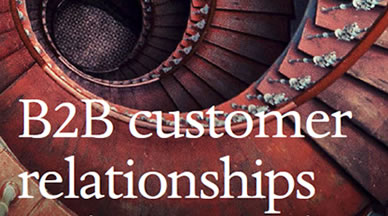
B2B customer relationships
International competition is ever more intense, so the actual customer relationship is becoming the focus of strategic business-to-business-marketing. Any analysis of the status quo will be multilayered, yet it will provide valuable information which will strengthen the quality of the relationship in the longer term.
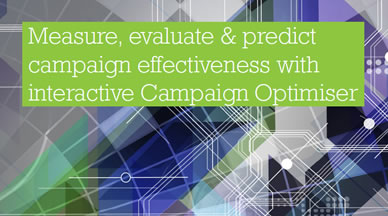
The interactive way to evaluate multiplatform campaigns
Measuring, evaluating and predicting advertising campaign effectiveness is increasingly complex as media usage fragments.
In a multiplatform world consumers are now bombarded with brand messages across all forms of media, from TV spots and sponsorship to mobile, social media and online. Brands need to identify and understand how different media are consumed, how they contribute towards awareness and brand values, and additionally how they work together for an advertising campaign. That’s why we’ve re-launched Campaign Optimiser in a new interactive format.
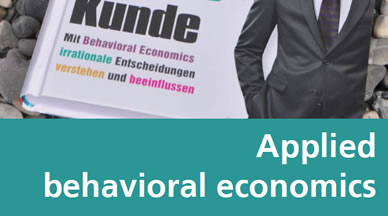
Applied behavioral economics - the easy way to increase profits
People by no means decide as rationally as companies often assume. Instead, they act in emotional, impulsive, uninformed, indifferent, or short-sighted ways. And yet the insights gained from behavioural economics also show us that these decisions follow clear patterns and are thus predictable. If you know how to use this and you understand what actually makes your own customers tick, this will open up a world of completely fresh opportunities.
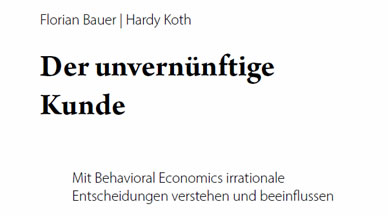
The irrational customer
Every company wants to favorably influence customers' purchase decisions, which makes it all the more astonishing that hardly any attention is paid to what actually happens when customers make decisions – the purchase process itself. One usually assumes that one is dealing with rational consumers, yet studies relating to behavioral economics unmistakably demonstrate that people don't make rational decisions.
Florian Bauer and Hardy Koth, who are both experts in their field, explain how these insights can be transferred to companies and duly exploited. They develop a purchase decision model which has been tried and tested in practice, and which embraces irrational human behavior and thereby renders it predictable. They also demonstrate how behavioral economics thus enables quantum leaps in terms of turnover and profits.
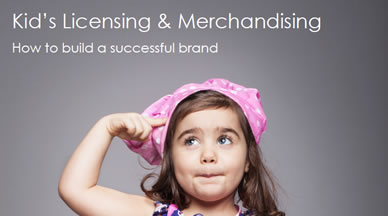
How to build a successful brand
Maximising a brand’s potential in the children’s market is increasingly difficult and licensing products now provides a key opportunity to extending its success. There are however an increasing number of barriers which influence and determine a brand’s success in the children’s’ market. In addition to mums acting as gatekeepers, children are becoming sophisticated consumers from a younger age. There is also mounting competition in an already crowded market place, dominated by a few lead licenses.

Delivering a successful Voice of the Passenger Programme – Top 10 Tips
Enhanced passenger satisfaction equals increased loyalty, a greater propensity to use and a higher tolerance when things go wrong. This can be achieved by understanding the needs, attitudes and experiences of your passengers through a programme of research which can measure, manage, as well as escalate and action passenger feedback.
We appreciate that delivering a successful Voice of the Passenger programme is a challenge. That’s why we’ve outlined our Top Ten Tips for developing, implementing and running them.
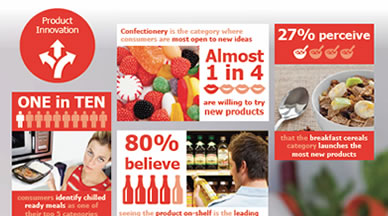
The Grocery Eye: Identifying consumer perceptions across key FMCG categories
New research assessing awareness and interaction with product purchasing perceptions amongst consumers’ within the FMCG arena has been conducted by Future Thinking.
We examined the habits of 2,000 male and female grocery shoppers to identify perceptions towards purchasing food and drink products. The Grocery Eye has assessed the role of new product launches, brand perceptions, drivers and barriers to purchase, as well as attitudes towards product attributes and ingredients.

The Changing Face of Research – Research Solutions for 2014
The world of market research is evolving rapidly with an explosion of new ideas generated by advancements in technology and innovation. The pace of change is creating both opportunities and challenges in terms of how best to understand consumers.
Future Thinking has identified seven areas of research which we believe will grow in importance in 2014; from innovative ways to present data, to research solutions helping you to better understand and identify consumer behaviour.
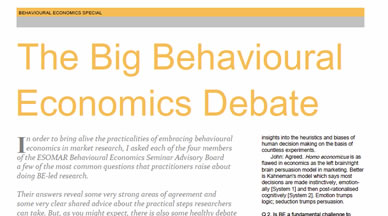
The art of pricing with behavioral economics
Classic pricing tools implicitly build on the assumption that customers behave like the famous Homo economicus - perfectly informed, selfish and rational decision makers with stable preference. Tools like conjoint analysis, price sensitivity measurement and the like ignore a wealth of insights about human decision making. More critically, they are incapable of identifying profit potentials that are hidden beyond people's predictably irrational decisions.

Pimp my survey
Customer satisfaction surveys are jumping onto the "surveytainment" bandwagon: it's a nice idea, but one which is nonetheless incapable of truly resolving acceptance-related problems in this area of research.
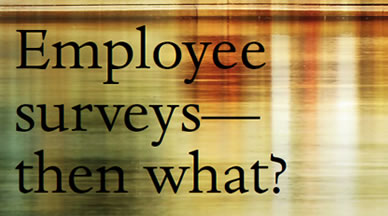
Employee surveys – then what?
Is the sole purpose of an employee survey to measure how satisfied your staff are? Not at all! Only by assessing their level of commitment can you deduce what actually needs to be changed.
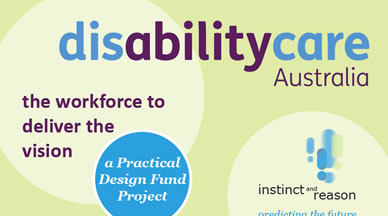
Disabilitycare Australia - The workforce to deliver the vision
instinct and reason made a successful submission to the Practical Design Fund around workforce capacity and capability. In our previous research and consultancy around the NDIS, we kept hearing people saying “there is going to be a huge expansion of services for people with disabilities”. The question we kept asking was “who is going to deliver these services?”. So we proposed research to find out. The research was both intensive and extensive and above all…practical!

Behavioral Economics
Companies want to influence customers' purchase decisions – which makes it all the more astonishing that they still know so little about the actual course of decision processes, which "behavioural economics" has nonetheless been researching for over 40 years.
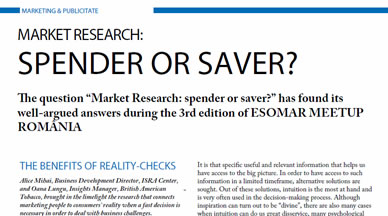
The question "Market Research: spender or saver?" has found its well-argued answers during the 3rd edition of ESOMAR MEETUP ROMANIA.
Alice Mihai, Business Development Director, ISRA Center, and Oana Lungu, Insights Manager, British American Tobacco, brought in the limelight the research that connects marketing people to consumers’ reality when a fast decision is necessary in order to deal with business challenges.

The people who understand customers
Mobilcom-debitel is the third largest provider of mobile phone contracts in Germany, yet consumers felt the company was small, and new business was sluggish. It was only when a comprehensive analysis of the customer structure was conducted that some surprising insights emerged, and this led to the company adopting a consistent new direction. Over a period of almost one year, management and the marketing department duly instigated the biggest branding revolution in the company’s history – and market research was a key factor in this.
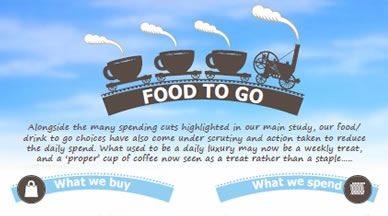
Food to Go
Alongside the many spending cuts highlighted in our main study, our food/drink to go choices have also come under scrutiny and action taken to reduce the daily spend. What used to be a daily luxury may now be a weekly treat, and a ‘proper’ cup of coffee now seen as a treat rather than a staple. Check out this infographic…

"It is home-made, isn’t it?" or the characteristics of Bulgarian consumption
Consuming home-made food is a tradition among rural population in Bulgaria. But what is the case with people living in urban areas? A Market LINKS study registers that even urban households with high income have increased the home-made food purchase from independent farmers. This trend is beneficial to small producers but not to the food industry.
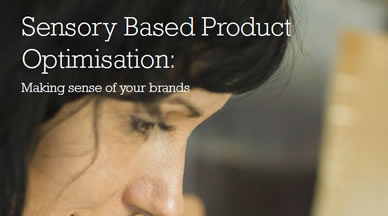
Sensory Based Product Optimisation
Consumer preferences can make or break a brand, and understanding how your product performs relative to branded and private label competitors is therefore vital. At Future Thinking, we use sensory profiling as part of our approach to product optimisation and competitor benchmarking. Quantified descriptive analysis (QDA) of your product is a valuable tool to identify how it differs from its competitors and how it can be improved to maximise consumer liking.

'Smart' market
The article covers the issue of Smart phones penetration into the Bulgarian market – size, market shares, trade channels, users’ profiles, and usage habits.
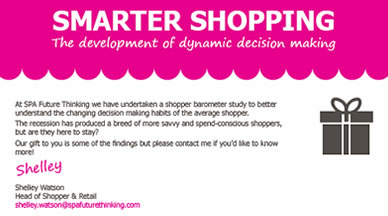
Smarter shopping - The development of dynamic decision making
At Future Thinking we have undertaken a shopper barometer study to better understand the changing decision making habits of the average shopper. The recession has produced a breed of more savvy and spend-conscious shoppers, but are they here to stay? Our gift to you is an infographic containing some of the findings.

Ready-made salads in the customer minds
'Ready-made salads' is a product category that usually falls outside the scope of the market research interest in the FMCG sector. However, these salads appear to be hugely popular among Bulgarian population - about half of the households purchase them. Ready-made salads are preferred mainly by young, married, active, working people living in big cities.

Product Claims
Making claims, factual or intangible, about your product can be a beneficial strategic route forward, for grabbing attention, providing that key USP, influencing purchase, or re-enforcing loyalty, through on-pack communication or advertising.
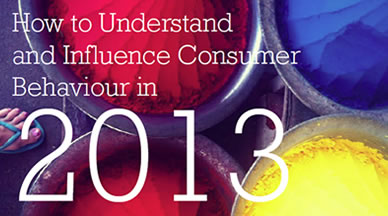
How to Understand and Influence Consumer Behaviour in 2013
The start of any new year brings about new opportunities, new ways of thinking, new ways to understand and influence consumer behaviour. Our Quantum Lab team are continually developing better ways to understand consumers using the latest thinking and technology. This document highlights ten innovative areas of research which can help you answer key questions and stay ahead in 2013.

Setting the scene for 2013
As Christmas 2012 starts to become a distant memory we’re turning our attention to 2013, thinking about those all important holiday dates and perhaps wondering what the new year might bring. Future Thinking have been spending time talking to a lot of consumers about the technologies they’re using, the content they consume and what they want out of the companies they deal with. So we thought we’d share with you a few of our thoughts from the Media, Marcomms and Technology team on some of the key themes we expect to be hearing about in our research in 2013.

After the first 8 months of 2012, when FMCG market grew by 2% in value, the end of the year brought a decrease in consumption for most product categories
A cautious but normal attitude, occurred against the background of socio-economic and political changes which also translated into a decrease in basket value in the hypermarket. Although the only one which managed to register an increase in purchase frequency, not even the traditional retail succeeds in exceeding a mean value of the sales receipt of 25 lei.

Price Image
When it comes to the topic of 'price image', people are often tempted to think "the cheaper the better", yet price image amounts to more than just the price-performance ratio. Other factors such as fairness, transparency or the price-utilisation ratio often have a far more crucial role to play.

If in 2009 Romanians mainly kept their purchase and consumption habits they had had before the onset of the economic crisis, in 2012 they resorted to a "bolder" attitude change
Despite a continuous state of dissatisfaction and confusion manifested throughout the past 4 years, Romanians managed to permanently find ways to adapt to and manage the economic downturn in everyday life: from a hesitating and cautious purchase behavior in 2009, they currently switched to rational and pragmatic purchases.
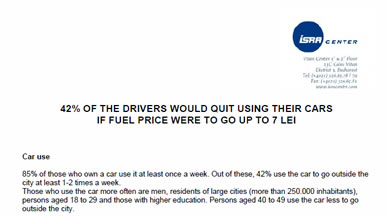
42% of the drivers would quit using their cars if fuel price were to go up to 7 lei
85% of those who own a car use it at least once a week. Out of these, 42% use the car to go outside the city at least 1-2 times a week. An increase in the gasoline/ diesel fuel price up to 7 lei would make 42% of those who use the car to think about quitting driving it.
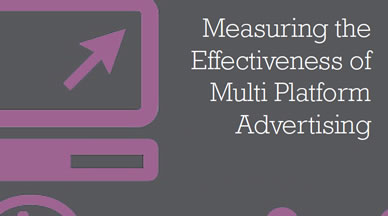
Measuring the Effectiveness of Multi Platform Advertising
Spreading the word about your company over multiple media outlets is essential to compete in today’s connected world. But how can you be sure you’re spending your advertising budget in the right place?

The snack between meals remains the main occasion, given that more than half of the respondents state that they choose biscuits when they feel the need for something sweet
Romanians are not big biscuits consumers. The most popular category of biscuits, the plain biscuits, is consumed at least once every 2 weeks by only 30% of the Romanians in the urban area. Every day, plain biscuits are consumed by 2% of the respondents and once a week by 11% of them.
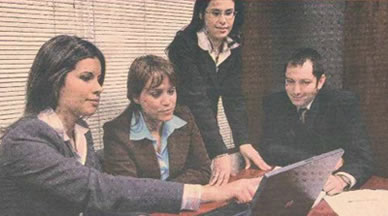
Executives prefer to take training courses instead of Masters
A study which investigated how executives felt about work related training and specialization. While the majority of those interviewed acknowledge the need for specialization, many thought that a masters degree was unnecessary. Most preferred training course or diplomas especially in fields such as management, planning and leadership.
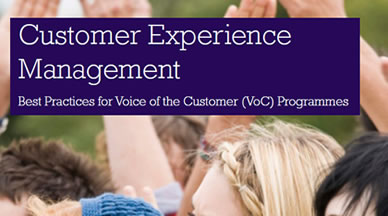
Best Practices for Voice of the Customer (VoC) Programmes
Prior to 1980 customer satisfaction surveys were limited to a very few of the larger organisations. It was only in the 1980’s where the launch of large scale tracking studies at a corporate level, primarily through mail surveys, first started to provide relational customer satisfaction data to help organisations understand their customers. This paper will review these trends and highlight the key practices which need to be adopted to successfully implement and integrate a Voice of the Customer (VoC) programme to improve customer loyalty and ensure business success.
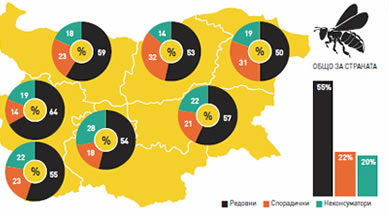
Honey – strong product, poor branding
Despite the relatively high consumption of honey at home, developing a strong product brand is almost “mission impossible”. Lack of trust in the honey industry combined with the desire to pay a lower price drives customers to buy the product directly from beekeepers. Only one out of twelve households purchase it from the trading network. The customer’s purchase habit hinders a strong brand developing.
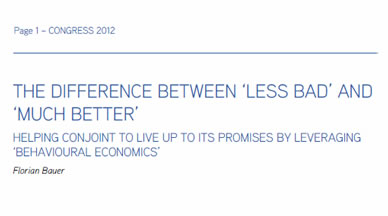
The difference between ‘less bad’ and ‘much better’
Recently, market researchers have become increasingly interested in integrating insights from ‘Behavioural Economics’ into their traditional research approaches. However, this was pretty much restricted to an inductive transfer of selected insights into designs and questionnaires on a case-by-case basis. Moreover, there was no systematic merging of these insights with the classical blockbuster tools of market research, especially with conjoint analysis. This go-to tool for simulating and modeling human choice is commonly criticised for assuming rational choice – something that has been regularly proved to be unrealistic. For the first time, a true solution to this problem has been identified by seamlessly merging conjoint analysis with the most important insights from ‘Behavioral Economics’. This makes predictions more valid while maintaining the core advantages of conjoint analysis.
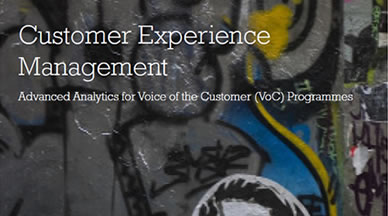
Advanced Analytics for Voice of the Customer (VoC) Programmes
Many companies are today increasingly challenged to maintain customer satisfaction and loyalty and to improve the customer experience. While organisations have programmes to measure and manage customer experiences, major challenges are the multiple information sources and the huge amount of structured and unstructured data available. The procedures of advanced analytics that companies can utilize to integrate into VoC programmes to better understand customers are described in this paper.
36% of Lima residents believe their income will improve in 2012
For the third year running our study found that Lima residents maintain a positive economic outlook. Many people feel that the continuous economic growth has shielded them from the financial crisis in Europe. This study looks at peoples future income expectations, spending and saving habits and future saving potential.
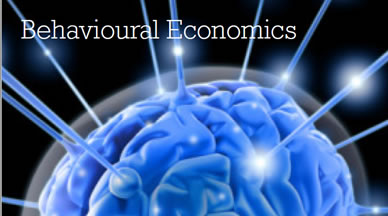
Behavioural Economics
Behavioural economics is the talk of the research town and whilst the desire exists to apply the principles, many a puzzled client has asked just how we incorporate it within insight projects.
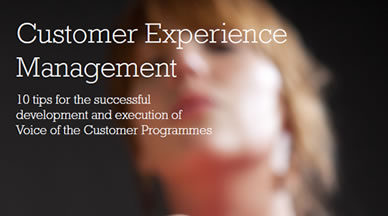
10 tips for the successful development and execution of Voice of the Customer Programmes
Voice of the Customer Programmes have the ultimate goal of ensuring the delivery of a great customer experience; to maximise customer loyalty and consequently to improve business performance. Building a comprehensive Voice of the Customer Programme has many interconnected elements. Within this document we have outlined the 10 best practices for developing, implementing and running Voice of the Customer Programmes which will define the future success of your programme.
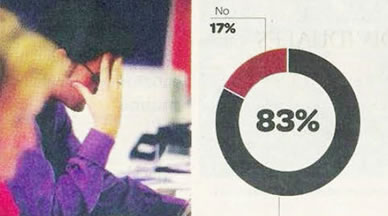
Executives admit that their companies have no anti-stress programs
A GRM study on stress in the workplace revealed that companies do little to prevent occupational stress, even though this reduces the prospects for company success in an increasingly competitive market.

Sponsorship: How to Make it Work
As sponsorship becomes more and more prevalent and consumers become more and more savvy to its purposes - getting it right is increasingly important. Get it wrong and you can expect a torrent of abuse on Twitter and other social media. So can the wrong sponsorship actually do more harm than good?

How a Summer of Sport will Create a New Dynamic in Broadcasting
By the time London 2012 starts on the 27th July, it is expected to take digital viewing opportunities to a new level and will almost certainly be the largest in the history of live video streaming and potentially the most watched event of all time. Multi-platform viewing has been a hot topic for a number of years. The emergence of smart phones, tablets and other devices has enabled consumers to view content on the move, and away from the arm chair. Broadcasters are therefore enabling content distribution through a wide variety of media by developing content for mobile and tablet apps as well as apps for video streaming.

Where and how much? Peruvian executives' national holiday plans
A behavioral study on the habits of Peruvian executives during the national holiday - “Fiestas Patrias”. This included studying peoples feeling of national pride.

Although research on green CSR campaigns is still at the beginning in Romania, ISRA Center has been actively involved in this type of strategic projects in the recent years.
The green territory has narrowed its borders in the recent years. Due to the economic difficulties, the companies that still allot dedicated funds are those pillared on social responsibility. These companies are the avant-garde of things well-done in sustainability. They are the reason we decided to make a top of the green companies in Romania.
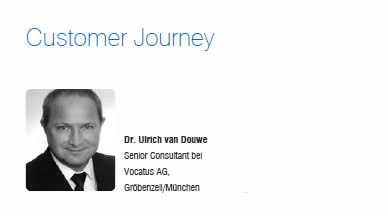
The customer journey: insights into the customer relationship
What makes customers enthusiastic, and what disappoints them? Why do satisfied customers cancel contracts, and why do disappointed customers ultimately stick with their provider/supplier? In order to understand this often paradoxical behaviour, it's necessary to take a holistic look at the customer journey and analyse its dynamic. This promises insights into the customer relationship which go deeper than is possible with classic methods.

Boosting consumption frequency - the main challenge on milk market
Although fresh, plain milk without flavours is consumed by 87% of the Romanians in the urban area, only a third include it in their daily menu, which means that, on the medium term, the category could grow especially by boosting consumption frequency.
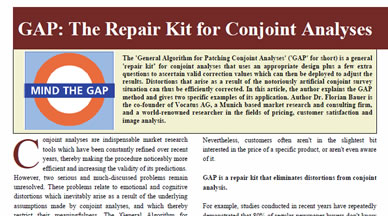
GAP: The Repair Kit for Conjoint Analyses
The 'General Algorithm for Patching Conjoint Analyses' ('GAP' for short) is a general 'repair kit' for conjoint analyses that uses an appropriate design plus a few extra questions to ascertain valid correction values which can then be deployed to adjust the results. Distortions that arise as a result of the notoriously artificial conjoint survey situation can thus be efficiently corrected.
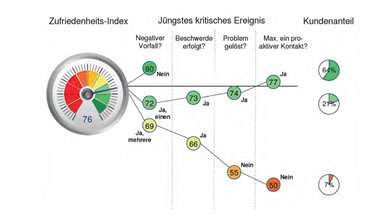
Customer Satisfaction - Are we Stuck in a Crisis?
Is customer satisfaction measurement fundamentally in crisis? This question always arises if the satisfaction scores completely fail to reflect customers´ actual behaviour. So what´s going wrong?
This article takes a critical look at the usual procedures and assumptions and tries to show how customer satisfaction measurement can better meet the requirements that are made of it and once again place a stronger focus on customers and how they think and act.

N-Dynamic host IRIS international market research forum in Shanghai China
As the exclusive Chinese partner of IRIS (International Research InstituteS), N-Dynamic Market Research and Consultancy Ltd. organized an international market research forum entitled "Enhancing marketing effectiveness through advanced market research solutions around the world" in Shanghai, China on April 20th 2012.
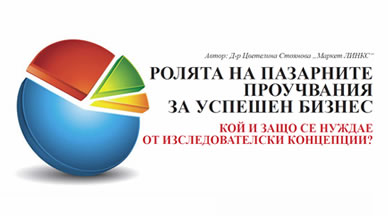
“The role of market research for business success” Who needs research concepts and why?
Annoying surveys over the phone or in the street, political studies during election campaigns, debates among sociologists. Facts, numbers, lies, lies and again lies. These are the first associations linked to sociologists’ and market researchers’ activities. But why is market research so important to the business? The article explains the main benefits of the market studies to the business.

Larry Ryan of Behaviour & Attitudes in Ireland presents at the MRS Healthcare Conference in London
This international health care study was conducted in 28 countries to asses perceived health, interaction with doctors and contributors to health. The study that was conducted by IRIS has been awarded with three prizes in the Marketing Society of Ireland peer-judged awards, including the Grand Prix for Best brand & Strategy Research, for the 2011.

Matchmaker The connection between customer typology and enterprisewide implementation
Finally – a typology that you can actually use! Matchmaker is an empirically based diagnosis and implementation instrument for aligning all of a company‘s activities with its customers‘ actual decision-making behaviour.

The prolonged recession increases the trial rate of private labels
The visit frequency for each type of store remained constant during last year, but the average amount spent decreased. The only exception from the rule is coming from hypermarkets, where there was a slight increase. Equally interesting is the fact that most of the new products tried by Romanians in the last month are retailers’ private labels.

How households get involved in the purchase of personal care products
A survey conducted by ISRA Center identifies buyers, decision makers, and influencers profiles for six products segments from the category of personal care products.
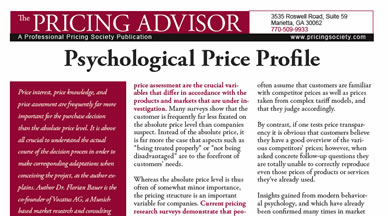
Psychological Price Profile
Price interest, price knowledge, and price assessment are frequently far more important for the purchase decision than the absolute price level
It is above all crucial to understand the actual course of the decision process in order to make corresponding adaptations when conceiving the project, as the author explains. Author Dr. Florian Bauer is the co-founder of Vocatus AG, a Munich based market research and consulting firm, and a world-renowned researcher in the fields of pricing, customer satisfaction and image analysis.

The average shopping basket value decreased in the first semester
Despite the much talked about economic revival, the numbers related to trade evolution for the first half of the year show quite the opposite. The first signal comes from the National Institute of Statistics, which reports a decline of the en-detail trade with 6.2% in January – June 2011 compared to the same period last year, based on sales decrease with 9.7% for food, drinks and tobacco.

How to 'hook' shoppers
Research conducted by ISRA Center, has identified four segments of shoppers, starting from the attitudes they have during the purchase of consumer goods as well as the opportunities these groups generate for retailers.

Collaborating with Gen-Y
Leveraging generational insight to build the best workplace for Gen-Y in China
China’s Gen Y is large, currently in very great demand, and part of one of the world’s fastest growing, largest, most powerful and most rapidly changing economy. As a result, this study breaks China’s Gen Y population apart from the rest and holds them as a unique group of employees. It examines China’s Gen Y from the perspective of China’s managers and employees. It studies international and local companies alike, across various regions in the country. It casts a wide net across the Internet, and probes deeper with in depth interviews. It uses case studies by China-based companies for likeminded China-based companies to create concrete pathways to change and improvement. While global lessons can be garnered from its pages, its perspective remains respectfully focused inward on China and what its companies need to succeed in the next generations.

Travel Retail Survey
The upsurge in consumer mobility and the quest for new areas boosting retail profitability led to the exploration and measurement of transport architecture as a distribution channel per se. Transit places are at the core of retailing as well as at the foundation of new points of sale featuring excellent consumer appeal. The survey explored shoppers’ POV on three “transit places” in Italy, broken down as follows: 1. Airports with domestic and/or international flights, 2. Medium-to-high traffic railway stations, i.e. railway stations in provincial capitals, 3. Motorway service areas. Trends and attractiveness of these new spaces have been quantified through the data collected among the target groups potentially interested.

The Psychological Price Profile
People rarely make decisions as rationally as a homo oeconomicus - particularly in relation to price. However, if one analyses their decision rules and pricing psychology motivation this yields a variety of pricing strategies that at first glance might appear utterly paradoxical, but are nevertheless very successful.

The Art of Pricing
Many companies think that price cuts are indispensable in times of crisis. However, this can have disastrous long-term consequences for both brand and profits. It is more productive to analyse whether the crisis actually changes customer motivation, their reason for purchase, and price acceptance.

Almost half of the Romanians in urban areas go to a traditional store every day
Products with a high percentage in the shopping basket, which are part of strictly necessary categories and satisfy primary needs, are also the ones to register a positive dynamic, increasing the percentage in the basket even more.

Fighting Mushroom Brands
Recession or no recession, most Pakistani consumers are hard pressed. While the so-called Pareto effect (affluent few control most resources) is there in all economies, perhaps its severity is the most in Pakistan. In years of economic growth, benefits were arguably restricted to upper tier of society. And now in times of stagflation (stagnant economy and high inflation), it's the middle and lower classes that suffer most. For them often the mundane purchase decision becomes 'whether' to buy, rather than 'which to buy'. As a consequence, making a right purchase decision has never been so critical for housewives - they simply can't afford to make one wrong decision and hence waste the money which is already scarce.

Only 4 in 10 customers usually ask for info on the products purchased
Most shoppers do not ask questions and do not ask for additional info from the sales personnel in traditional retail.
On the other hand, few sellers make the effort to initiate a conversation with the shopper by spontaneously offering advice.
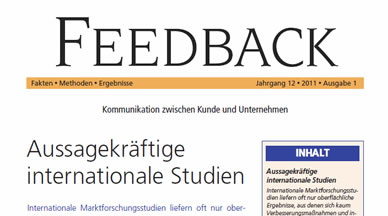
Meaningful International Studies
International market research studies often provide only superficial results, on the basis of which it is very difficult to deduce and implement possible improvements and individual recommendations for action. However, this tends to squander the immense potential offered by international studies.
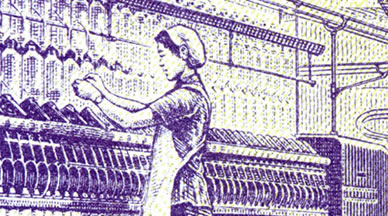
Pricing beyond the Homo Oeconomicus
In order to understand consumers’ actual decision processes, one has to consider various pricing psychology factors. In order to achieve this, Vocatus designed an international baseline study which examined consumers’ behaviour according to sectors and types of product, thereby defining five different consumer types.

Consumers on stores performance. Traditional vs. Hyper / supermarket vs. Discount
Promotions and competitions are part of stores’ daily routine, therefore buyers do not pay much importance to them when evaluating any retailer as they got used to these actions being part of stores’ usual offer. Nevertheless, there is room for improvement in all cases. Retailers in Romania have focused little on the emotional attributes of communication programs. However, traditional as well as modern stores perform well when it comes to the atmosphere inside the unit. This is not yet an important criterion for consumers, but it can be seen as an opportunity to exploit in the future.
